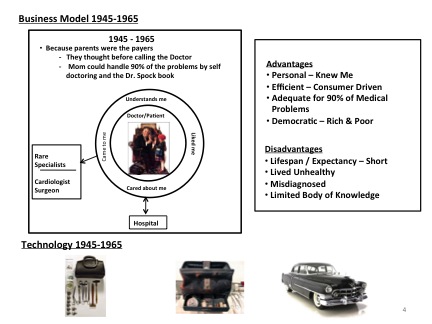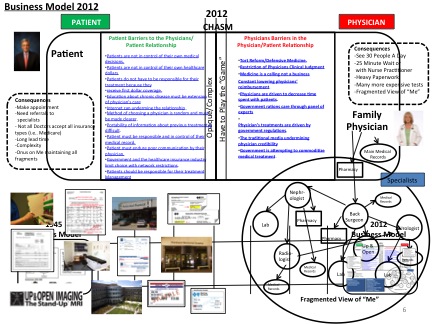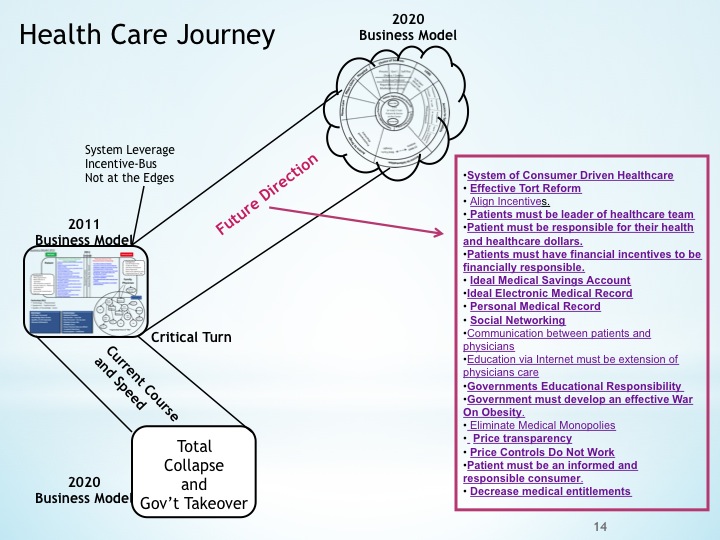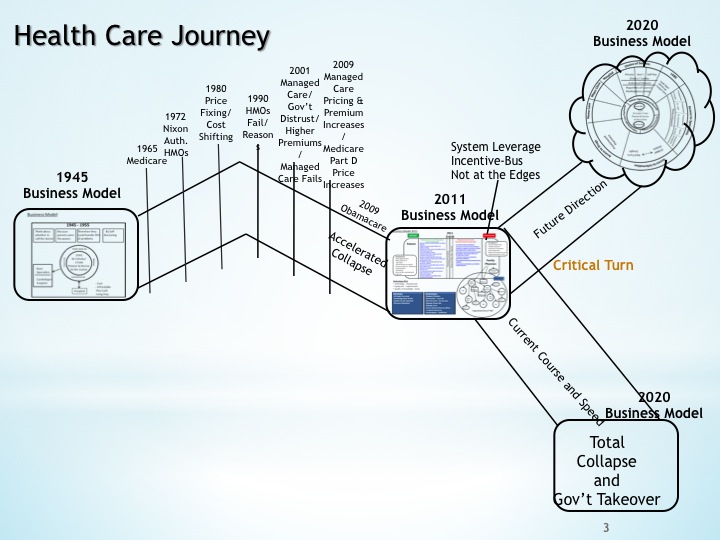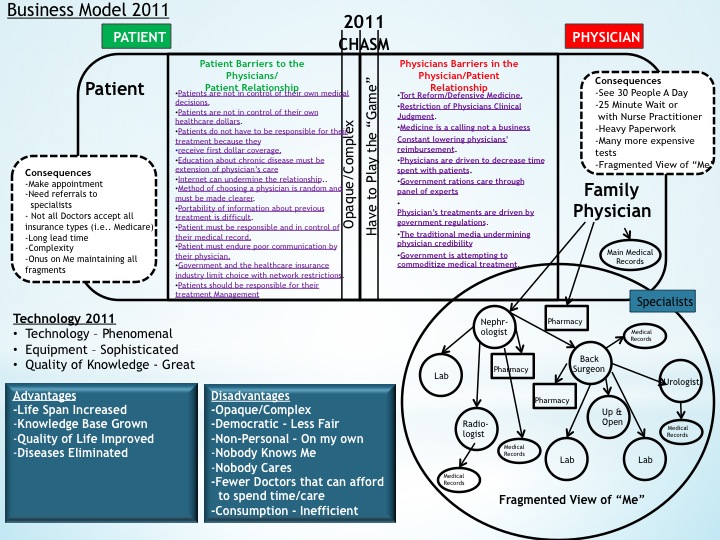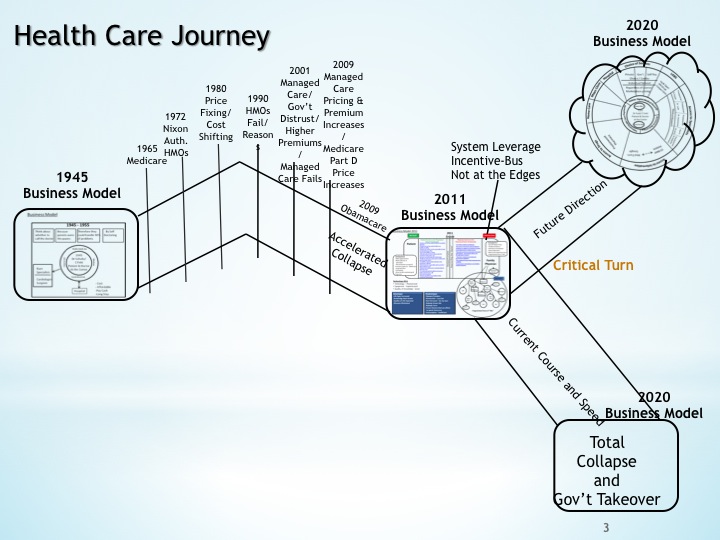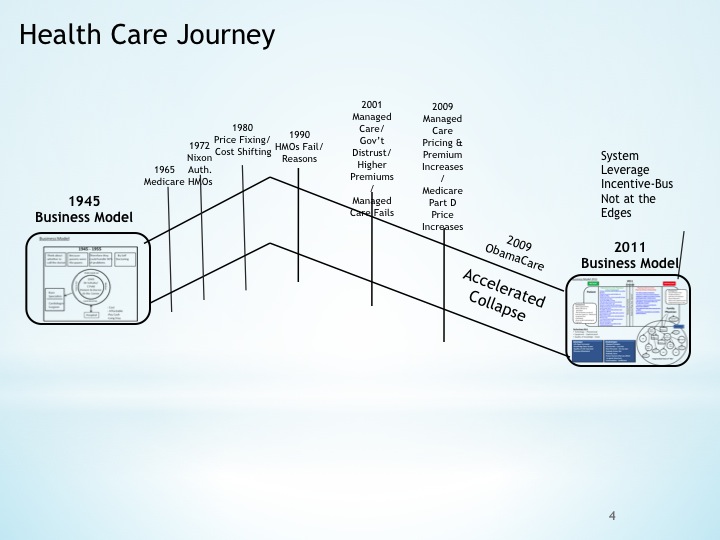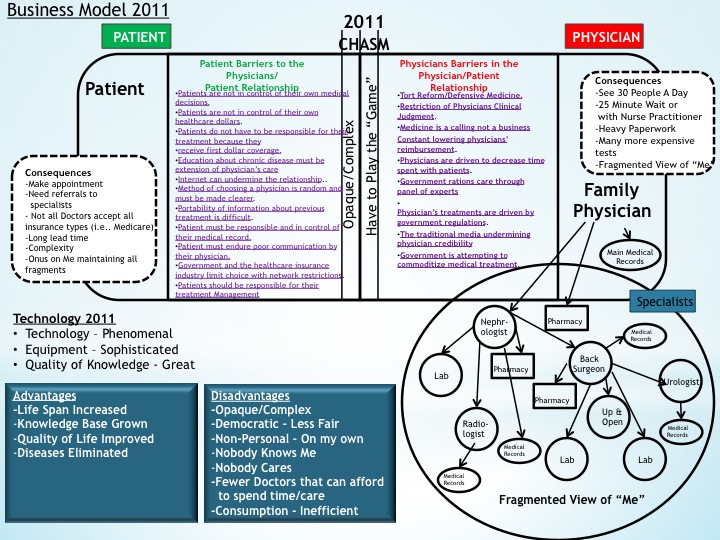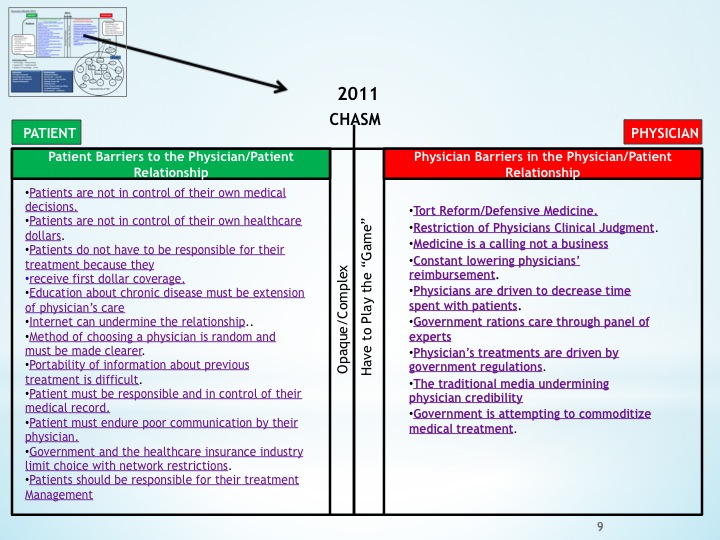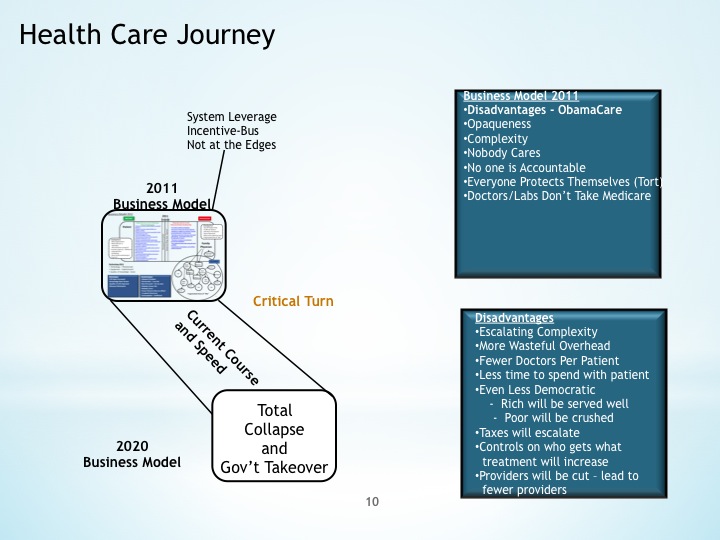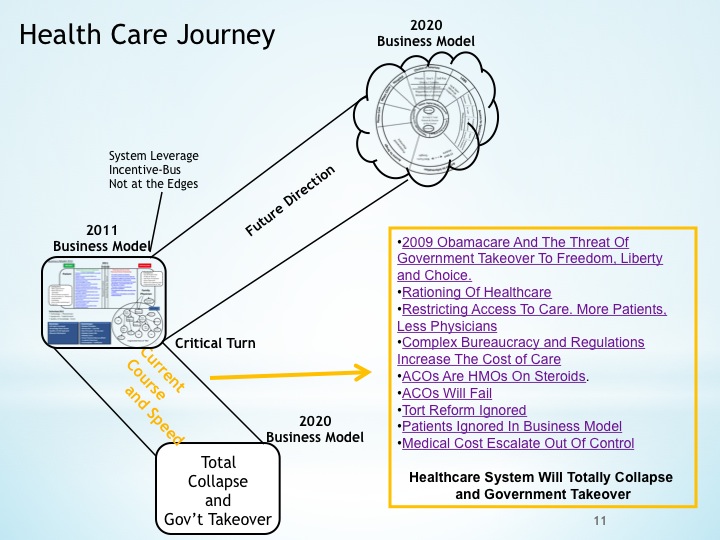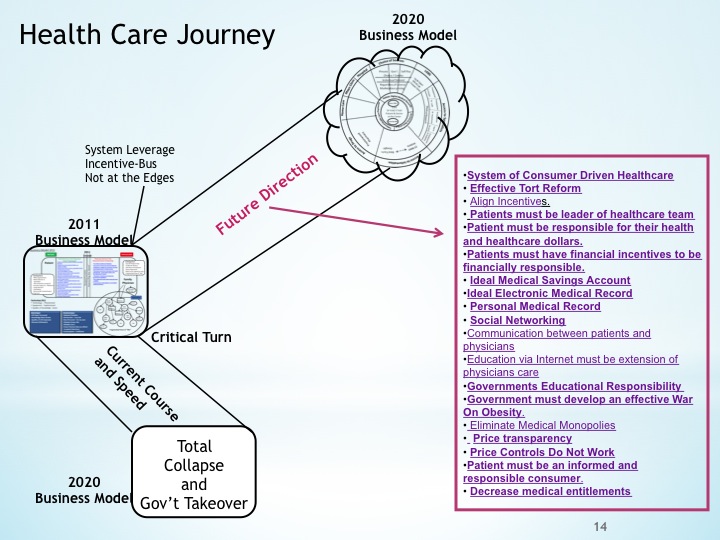Healthcare Needs Some Big Time Disintermediation
Stanley Feld M.D., FACP, MACE
What is disintermediation?
Disintermediation is a process that provides a user or end consumer with direct access to a product, service or information that would otherwise require a mediator (middleman) such as a wholesaler, lawyer or salesperson.
In many cases the information available on the Internet has often eliminated the need for a middleman.
As commerce grew in the United States after WWII, there was a need for multiple middlemen to fulfill each commercial endeavor.
One of the strongest examples of early Internet disintermediation was Dell Computers. Consumers were able built custom computers by picking the components. They bought exactly what they wanted at a lower price. Michal Dell sold directly to the consumer and bypassed all the middlemen channels and normal retail outlets.
Amazon is another compelling example. It started with books and now includes almost everything. Amazon bypasses most of the channels and all of the expense of brick and mortar structures to lower the cost to the consumer.
Steve Jobs did it best with ITunes. Most people did not want the16 tunes on a CD. They might want one or two. Music publishers and all the middlemen in that industry fought him tooth and nail.
Steve Jobs won because he provided the consumer with what they wanted, the one song at 99 cents as opposed to 16 songs at $16 dollars.
The music publishing companies have now realized that they are doing better since ITunes with less middlemen and more product sales.
My son, Brad Feld, is going to disintermediate the book publishers. Brad authored 5 books for Wiley Press as part of the Start Up Revolution. Wiley Press and its bureaucracy treat him and other authors unfairly.
He and his partners at Foundry Group Venture Capital started FG Press.
I believe the FG Press results will be to disintermediate the entire book publishing industry.
Disintermediation though the Internet also happened in the travel industry, the airline industry, the stock broker industry and the banking industry.
Disintermediation cuts out the middleman.
“By using the Internet, companies and even manufacturers can deal directly with users or end consumers, which is a significant factor in decreasing the cost of servicing customers. The high market transparency often enables the buyers to pay less as they deal directly with the manufacturer, bypassing the wholesaler and the retailer. As another alternative, buyers can also buy directly from wholesalers.”
There is no reason disintermediation cannot be applied to healthcare. The goal in healthcare is to lower the cost, increase quality of care and increase access to care.
The way to do it is by making consumers the most important stakeholder. Consumers must drive the healthcare system just as consumers are put at the head of the line in other disintermediated systems that work.
In 1946 the healthcare business model was simple. The healthcare contract was between consumers/patients and physicians.
Consumers were responsible for their medical care. The only technology was physicians’ car his stethoscope and his doctors bag. Consumers were also cautious in their utilization of healthcare services. They did not want to waste their money. They were responsible for their health and their healthcare dollars.
Healthcare insurance destroyed this relationship. Healthcare insurance was attractive to sick people. It was attractive to employers to help their employees stay well. It also helped employer keep their valuable labor force.
Consumers became less cautious about spending their healthcare dollars as third parties were paying for healthcare costs.
The use of technology boomed in medicine. The cost of healthcare escalated as more and more technology was used.
In 1965 the government created Medicare. Medicare regulations distorted the free market healthcare system. The distortion increased further in the early 1980s.
All of a sudden there were more and more middlemen. The middlemen added little value to the medical care of consumers/patients. However they did add increased costs to the healthcare system.
In 2008 the healthcare system became so complex and riddled with rules and regulations that enormous barriers existed between the consumers/patients and their physicians.
It looks like a giant hairball that cannot be digested.
Obamacare was invented to use technology and ideology to straighten this all out. It has made and is making healthcare more unsustainable.
Obamacare cannot work. It is government control. The majority of consumers and physicians are against it.
Obamacare destroys the patient physician relationship. Obamacare has resulted in more bureaucracy, large overhead, more middlemen and an increase in costs to the consumers in terms of higher taxes and higher healthcare insurance premiums.
The major problems are there are too many middlemen and the bureaucracy is superimposed on a failed legacy healthcare system.
Hospitals charges are outrageous. Hospital expenses are inflated.
The need for cost shifting puts a large burden on hospital systems.
Government interference simply escalates costs.
An example is the cost of chemotherapy. In hospital chemotherapy cost is 2 to 3 time the cost of the chemotherapy done by the same doctor in that doctor’s office. The government does not pay for chemotherapy in the doctor’s office.
An example of disintermediation in the healthcare system is the Oklahoma Surgery Center.
“The Oklahoma Surgery Center demonstrates that it’s possible to offer high quality care at low prices. Surgeons can do twice as many surgeries in an outpatient surgery center than they can in a traditional hospital surgical suite.
Most industries try to improve efficiency. However, simple efficiencies have not occurred in most traditional hospitals. Surgeons spend half their time waiting for the patients to come to the operating room or for the availability of operating rooms and equipment.
The Surgery centers have solved these efficiency problems. They can service surgeons’ needs at less than half the cost without the wasted time.”
The cost of a “complex bilateral sinus procedure” at the Surgery Center was an all-inclusive $5,885. The traditional hospital bill totaled $33,505 without the surgeon’s and anesthesiologist’s bill included.”
Hospital systems in the area are lowering their prices and becoming more transparent.
Obamacare has made the healthcare insurance costs worse for the middle class. The middle class healthcare insurance premiums are not subsidized by the government.
Obamacare has made the premium cost better for the poor and sick. It has not necessarily lowered the deductible. It has not made access to care better for the poor.
Obamacare may make quality of care worse. It will restrict access to care. It will ration care. Obamacare will make medical care decisions for consumers.
The only way to repair the healthcare system is to make it a consumer driven healthcare system using my ideal medical saving accounts.
The opinions expressed in the blog “Repairing The Healthcare System” are, mine and mine alone.
Please have a friend subscribe
